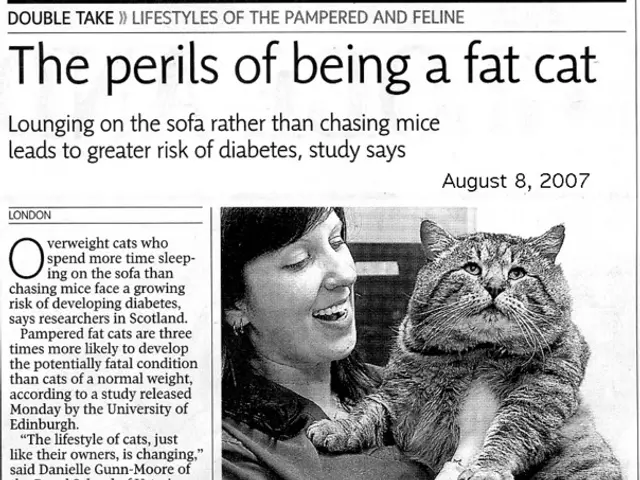Post-Incident Fire Assessment: Beach Safety in Los Angeles
Let's Set the Record Straight: Is a dip in the ocean after the LA County fires risky for our health? Here's the lowdown on the furious fires, toxic waste, and the beach—and what you need to know before you dive in.
Months have passed since the LA County fires tore through the landscape, sending a torrent of toxic materials washing into the ocean. Now, the question on everyone's mind is whether the beaches are still unsafe.
Well, buckle up, because the search for answers has been a wild ride.
First off, the good news: Not a single government agency or privately funded group has discovered levels of fire-related contamination in the sand or ocean water that could sicken beachgoers. While it's important to steer clear of visible fire debris, there's little evidence pointing to illnesses caused by casual recreation.
Now onto the not-so-good news: The sheer scale of ecological damage is overwhelming and goes way beyond our measly tools for tracking beach pollution.
The tests that determine the county's beach water quality advisories focus on sewage, not fire debris. The state and federal regulators have guidelines for the maximum amount of heavy metals and chemicals in drinking water, but nothing similar for swimming or lounging on contaminated sand.
This reveals a stumbling block: The lack of pre-existing health guidelines to swiftly and effectively determine whether the coast is ready for action.
Tracy Quinn, president of the environmental nonprofit Heal the Bay, sums it up neatly: "There are no straightforward health standards for recreating in water or on sand that has been contaminated…[and] that has presented a lot of challenges."
The blazing Palisades and Eaton fires charred over 40,000 acres and a mountain of stuff toxic enough to make you squirm, including plastics, electronics, building materials, batteries, and who knows what else. Thanks to LA's geography, much of this yucky stuff got washed into the ocean.
The county health officials temporarily shut down several stretches of coastline in January and February over spiking bacteria levels tied to shattered sewage systems and treacherous hazardous debris clogging up the shore.
Meanwhile, the Los Angeles Regional Water Quality Control Board snatched up samples of ocean water to evaluate contaminant levels. Unfortunately, the board can't compare these data to pre-fire conditions, since there's little historical data to work with.
This leaves county health officials in a pickle, trying their darnedest to translate their findings into recommendations the public can understand. Dr. Nichole Quick, chief medical advisor with the L.A. County Department of Public Health, explains: "This is not business as usual with ocean water testing."
Heal the Bay conducted their own seawater tests alongside the county's efforts and found lead and other heavy metals in some samples. While human swimming in these waters wouldn't pose a direct threat, prolonged exposure could potentially harm marine life, albeit in much smaller quantities compared to the pollutants that could sicken them.
The county now offers an online dashboard that includes ocean water testing data. But due to the unexpected pile of data online, many beachgoers feel anxious and confused about the whole thing.
"Everybody wants an answer right now: Is it safe? Me too! I'm a surfer. My fins are drying. But we're trying to be patient at the same time," says Eugenia Ermacora, Los Angeles chapter manager for the Surfrider Foundation.
California's coastline is undergoing a real-life science experiment, and clear answers will take time. On the upside, this disaster may help illuminate paths for future disaster responses and prevention.
Quinn of Heal the Bay stays hopeful: "My hope is that we take the information that we're learning here and we create protocols and standards for what to do next time."
For More Info:
- Researchers assure drinking water safety after Eaton and Palisades burn areas
- L.A. County discovers lead in soil on properties previously cleaned by Army Corps
- The Times' testing reveals high levels of toxic substances in soil after the LA fires
Some Key Guidelines:
- Regular Monitoring: Check local advisories before engaging in water activities. Watch out for sewage and contaminants.
- Air Quality: Air pollution is another concern, so consult AQIs before planning outdoor activities.
- Sand Contamination: Avoid disturbing the sand, as it may contain ash, soot, heavy metals, and organic compounds.
- Personal Protective Equipment (PPE): Masks with HEPA filters can help protect against particulate matter when air quality is poor, although there's yet no specific guideline for chemical exposure while recreating on sand or in water.
- Health Symptoms: Keep an eye on symptoms of exposure, such as coughing, shortness of breath, and skin irritation. Don't forget to seek medical advice if symptoms persist.
- Children and Vulnerable Populations: Keep in mind that children, older adults, and people with pre-existing respiratory conditions are more susceptible to health impacts from wildfire pollutants.
- While the beaches might be clear of immediately harmful fire-related contamination, the scale of ecological damage is significant and extends beyond the scope of current beach pollution tests.
- California's coastline is undergoing a real-life science experiment, with scientists and agencies working tirelessly to assess the damage and ensure public safety.
- It's essential to check local advisories before engaging in water activities, as contaminants like sewage might still pose a risk to beachgoers.
- Climate change and wildfires could lead to increased instances of toxic waste in the environment, emphasizing the importance of environmental-science research and policy.
- In light of the lack of pre-existing health guidelines for contaminated sand and water, individuals are advised to adopt precautions such as avoiding disturbance of the sand and wearing masks with HEPA filters in poor air quality conditions.
- For fitness enthusiasts, it's crucial to prioritize health and wellness during this time, considering that prolonged exposure to certain contaminants, even in small quantities, could potentially harm both human health and marine life.
- Unfortunately, the sheer scale of the disaster makes it challenging to compare current contaminant levels to pre-fire conditions, leaving health officials working diligently to translate their findings into understandable recommendations for the public.
- Sports-betting enthusiasts might find solace in following the Rams' season as they provide an exciting distraction from the ongoing environmental concerns, while still encouraging a love for fitness-and-exercise and support for local Los Angeles teams.








